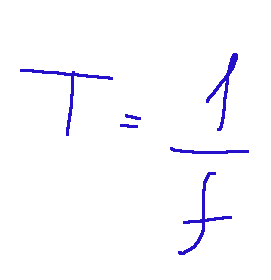
~~~ La versione in italiano inizia subito dopo la versione in inglese ~~~
ENGLISH

09-04-2025 - Physics - Friction and harmonic motion [EN]-[IT]
With this post I would like to give a brief instruction about the topic mentioned in the subject
(code notes: X_87-86)
Friction and harmonic motion

image created with artificial intelligence, the software used is Microsoft Copilot
Introduction
The friction force is a passive contact force, that is, generated by the simple contact between two surfaces and such as to oppose the movement of a body.
Friction forces can be grouped into three categories:
1-Sliding friction: when two bodies slide on one
another. Sliding friction is defined in this way because it acts parallel to the surfaces that, sliding on one another. The surfaces that generate sliding friction are called rough.
2-Rolling friction: when a body rolls on the surface of
another.
3-Viscous friction: when a body moves in a fluid.
Then we can talk about other types of friction such as static friction and dynamic friction. In reality these two frictions are two categories of sliding friction.
Static friction
Static friction is a force that prevents bodies placed on a rough surface and initially at rest from moving if the force acting on them, in a direction parallel to the surface, does not exceed a certain threshold. Once this threshold is exceeded, static friction stops opposing (it ceases completely). Note that, according to the first law of motion, a body at rest cannot start moving unless a force acts on it. The threshold value within which the static friction force acts is equal to:

that is, there is no motion until the sliding component of the forces F exceeds the threshold value.
Static friction is stronger than dynamic friction, which is the friction that acts when the body is already in motion. I will talk about this right here below.
Dynamic Friction
Dynamic friction occurs when a body slides on a surface (i.e. is already in motion), and is a resistance that opposes this movement. In general, both types of friction are present: if a body is at rest on a rough surface, before it starts to move, the force applied to it must exceed a certain value; when the movement begins, the resistance of static friction ceases, and dynamic friction immediately comes into play.
Below is the mathematical expression of dynamic friction

Where:
Fd = the dynamic friction force.
μd = the coefficient of dynamic friction, which depends on the nature of the surfaces involved (material, roughness, etc.).
Fn = the normal force, i.e. the force perpendicular to the surface that presses the body against it (for example the weight of the object on a horizontal surface).
NOTE:
Experimentally, it is verified that:

This means that the coefficient of dynamic friction is always less than the coefficient of static friction.
The angle of friction
The angle of friction is the maximum angle that a surface can form with respect to the horizon before an object on it begins to slide, overcoming static friction. It is closely related to the coefficient of static friction (𝜇𝑠) and represents a measure of the resistance offered by the surfaces in contact.
Mathematically, the angle of friction (θ) is expressed as follows:

Where.
θ = friction angle
𝜇𝑠 = coefficient of static friction
Viscosity
Viscous friction is a resistance force that acts on an object that moves through a fluid (such as a liquid or a gas) or that moves inside it. It is caused by the viscosity of the fluid, or its ability to oppose the movement of the particles inside it.
Viscous friction can depend on several factors that I list below:
-The speed of the object
-The viscosity of the fluid
-The size and shape of the object
Harmonic motion
Let's talk about harmonic motion now and specify what the simple one is.
Simple harmonic motion is a periodic motion along a rectilinear axis called origin (O) that respects the following time law:

Where:
x(t) is the position
A is the amplitude
φ is the initial phase at time
t=0
ω is the pulsation
ωt+φ is the phase of the motion with A, φ, ω constant quantities.
Amplitude
The amplitude of harmonic motion is a quantity that indicates the maximum distance that a spring can reach from its equilibrium position during the motion.
Period
The period of harmonic motion is the time that an oscillator takes to complete a complete oscillation cycle, returning to the same initial position and condition. In other words, it is the duration of a complete oscillation.
The relationship between period and frequency is always the classic one reported below:

Conclusions
We can define friction as a fundamental force that opposes the movement between two surfaces in contact, while harmonic motion is a type of regular oscillation.
Question
Leonardo was not only an extraordinary artist, but also a brilliant scientist and engineer. Did you know that in his notes he had described the fundamental laws of friction, distinguishing between sliding friction and rolling friction?

ITALIAN

09-04-2025 - Fisica - Attrito e moto armonico [EN]-[IT]
Con questo post vorrei dare una breve istruzione a riguardo dell’argomento citato in oggetto
(code notes: X_87-86)
Attrito e moto armonico

immagine creata con l’intelligenza artificiale, il software usato è Microsoft Copilot
Introduzione
La forza d’attrito è una forza di contatto passiva, ovvero generata dal semplice contatto tra due superfici e tale da opporsi al movimento di un corpo.
Le forze d'attrito possiamo racchiudere in tre categorie:
1-Attrito radente: quando due corpi strisciano l’uno
sull’altro. L’attrito radente è definito in questo modo perché agisce parallelamente alle superfici che, scivolando l’una sull’altra. Le superfici che generano attrito radente si chiamano scabre.
2-Attrito volvente: quando un corpo rotola sulla superficie di
un altro.
3-Attrito viscoso: quando un corpo si muove in un fluido.
Poi possiamo parlare di altri tipi di attrito come l'attrito statico e l'attrito dinamico. In realtà questi due attriti sono due categorie dell'attrito radente.
Attrito statico
L’attrito statico è una forza che impedisce ai corpi posti su di una superficie scabra e inizialmente in quiete di muoversi se la forza agente su di essi, in direzione parallela alla superficie, non supera una certa soglia. Superata questa soglia, l’attrito statico smette di opporsi (cessa del tutto). Si noti che, in base al primo principio della dinamica, un corpo in quiete non può iniziare a muoversi a meno che non agisca su di esso una forza. Il valore di soglia entro il quale agisce la forza d’attrito statico è pari a:

ovvero non c’è moto sino a quando la componente radente delle forze F non supera appunto il valore di soglia.
L'attrito statico è più forte rispetto all'attrito dinamico, cioè quello che agisce quando il corpo è già in movimento. Di questo ne parlerò proprio qui di seguito.
Attrito dinamico
L’attrito dinamico si manifesta quando un corpo scivola su una superficie (cioè è già in movimento), ed è una resistenza che si oppone a questo movimento. In generale, sono presenti entrambi gli attriti: se un corpo si trova in quiete su di una superficie scabra, prima di iniziare a muoversi la
forza ad esso applicata deve superare un certo valore; quando il movimento ha inizio, cessa la resistenza dell’attrito statico, ed entra subito in gioco l’attrito dinamico.
Qui di seguito l'espressione matematica dell'attrito dinamico

Dove:
Fd = la forza di attrito dinamico.
μd = il coefficiente di attrito dinamico, che dipende dalla natura delle superfici coinvolte (materiale, rugosità ecc.).
Fn = la forza normale, ovvero la forza perpendicolare alla superficie che preme il corpo contro di essa (ad esempio il peso dell'oggetto su una superficie orizzontale).
NOTA:
Sperimentalmente, si verifica che:

Questo significa che il coefficiente d'attrito dinamico è sempre minore del coefficiente d'attrito statico.
L'angolo d'attrito
L'angolo d'attrito è l'angolo massimo che una superficie può formare rispetto all'orizzonte prima che un oggetto su di essa inizi a scivolare, superando l'attrito statico. È strettamente legato al coefficiente di attrito statico (𝜇𝑠) e rappresenta una misura della resistenza offerta dalle superfici a contatto.
Matematicamente, l'angolo d'attrito (θ) si esprime così come segue:

Dove.
θ = angolo d'attrito
𝜇𝑠 = coefficiente di attrito statico
Viscosità
L'attrito viscoso è una forza di resistenza che agisce su un oggetto che si muove attraverso un fluido (come un liquido o un gas) o che si muove al suo interno. È causato dalla viscosità del fluido, ovvero dalla sua capacità di opporsi al movimento delle particelle al suo interno.
L'attrito viscoso può dipendere da diversi fattori che elenco qui di seguito:
-La velocità dell'oggetto
-La viscosità del fluido
-Le dimensioni e la forma dell'oggetto
Il moto armonico
Parliamo ora del moto armonico e specificando cosa è quello semplice.
Il moto armonico semplice è un moto periodico lungo un asse rettilineo detto origine (O) che rispetta la seguente legge oraria:

Dove:
x(t) è la posizione
A è l'ampiezza
φ è la fase iniziale al tempo
t=0
ω è la pulsazione
ωt+φ è la fase del moto con A, φ, ω grandezze costanti.
L'ampiezza
L'ampiezza del moto armonico è una grandezza che indica la massima distanza che una molla può raggiungere dalla sua posizione di equilibrio durante il moto.
Periodo
Il periodo del moto armonico è il tempo che un oscillatore impiega per completare un ciclo completo di oscillazione, tornando alla stessa posizione e condizione iniziale. In altre parole, è la durata di una oscillazione completa.
La relazione tra periodo e frequenza è sempre quella classica riportata qui di seguito:

Conclusioni
Possiamo definire l'attrito come una forza fondamentale che oppone il movimento tra due superfici a contatto, mentre il moto armonico è un tipo di oscillazione regolare.
Domanda
Leonardo non era solo un artista straordinario, ma anche un brillante scienziato e ingegnere. Lo sapevate che nei suoi appunti aveva descritto le leggi fondamentali dell'attrito, distinguendo tra attrito radente e attrito volvente?
THE END